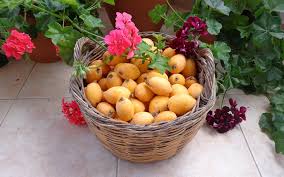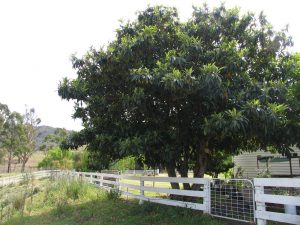
Loquats are evergreen fruit-bearing trees that are well adapted to the North Central Florida region. They are native to China and Japan where they have been grown for many centuries. While they have a similar name to Kumquat, which is a citrus, they have no relation at all. Loquats produce flowers in the fall and fruit ripens in winter and early spring. The fruit are bright yellow or orange in color and are produced in clusters. Typically the fruits are round or oval in shape and range in size from a large marble to the size of a ping-pong ball.
How do they taste?
The flavor can be described as somewhat acidic and sweet combined with various floral notes. The skin on the fruit can be peeled off or eaten whole, and the texture of the flesh is most similar to that of a plum or a ripe pear.
There are many varieties of Loquats which results in a wide range of size, shape, and flavors. Finding improved varieties can be a challenge as they are mainly available in Central and South Florida. If improved varieties are not available the seedlings will still produce excellent fruit.
Well Suited to the North Central Florida Climate
Not only do Loquats produce large quantities of delicious fruit, but they are also very robust plants. They can handle freezing temperatures and drought conditions. Planting in full sun is best, though they do well under partial shade as well. Planting is recommended when done outside of the summer months. Loquats prefer well-drained, sandy soil.

Like with any plant, it’s important not to plant too deep, so keep the top of the root ball even with the surrounding ground level. Once in the ground it will need to be watered regularly for about two weeks, and then intermittently for an additional two weeks. Usually they grow to a height of 15 feet and about 20 feet wide, so they will need to be planted with space to expand.
No fertilizer is necessary and minimal pruning is required for this tree to thrive once it has become fully established. Occasionally they can get a bacterial disease called fire blight that will rapidly kill the branches starting at the tips and working downwards to the center of the tree. Prune out the dead or dying limbs with clean loppers well below where symptoms are visible. Aside from fire blight, the Loquat has few other common diseases or insect pests.
These plants are an excellent addition to a yard as both an ornamental and fruit-bearing tree.
 1
1
